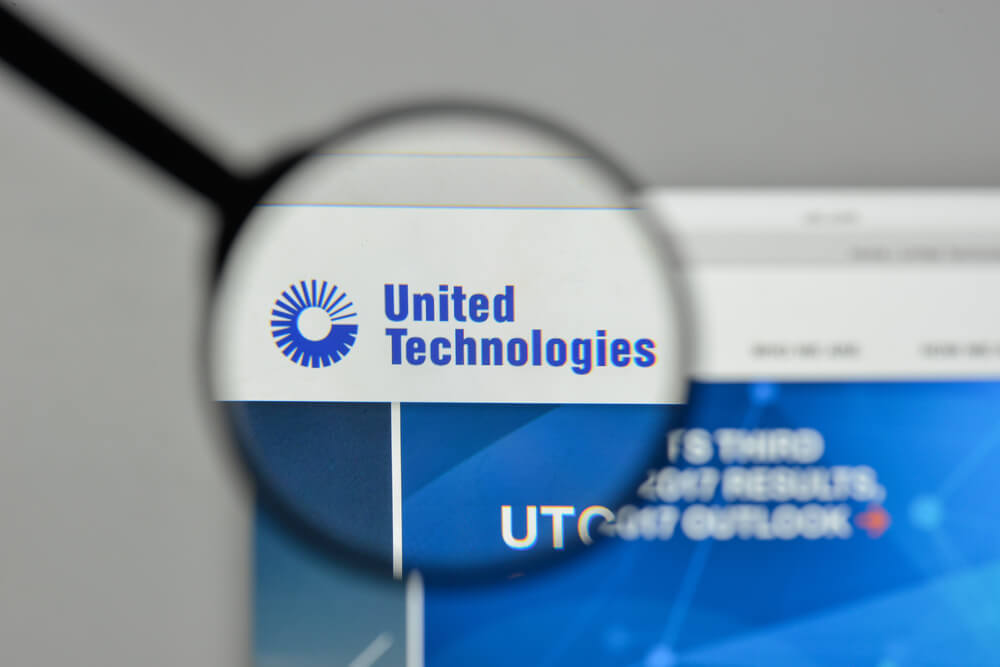The Department of Justice green lit the Raytheon-United Technologies merger Monday, pending divestitures from both of the major defense companies.
The $130 billion all-stock deal between Raytheon Companies (NYSE: RTN) and United Technologies Corp. (NYSE: UTX) is expected to be finished by April 3.
United Technologies is listed on the Dow Jones Industrial Average index and both are on the S&P 500.
Raytheon Technologies Corp. will trade on the New York Stock Exchange under the ticker symbol RTX.
“We are more than just two businesses coming together — Raytheon Technologies will be uniquely positioned to deliver advanced and innovative solutions to our customers while delivering significant value to shareowners,” Tom Kennedy, Raytheon CEO said in a statement.
DOJ Contingencies
The DOJ approved the merger under the conditions that Raytheon and United Technologies spin off a pair of subsidiaries — Carrier and Otis — as well as sell off part of its Collins Aerospace subsidiary.
UTC acquired Carrier and Otis in November 2018 when it purchased Rockwell Collins. Carrier is a provider of HVAC, refrigeration and security products. Otis manufactures elevators, escalators and moving walkways.
BAE Systems (Over-the-counter: BAESY) is buying Collins Aerospace’s military GPS business — owned by UTC — for $1.93 billion. BAE is also buying Raytheon’s airborne tactical radios business for $275 million.
Those sales satisfy the Justice Department’s divestiture requirement.
“The merger, as originally proposed, would have eliminated competition in the supply of military airborne radios and military GPS systems and would have positioned the merged firm to harm rivals capable of making key components for reconnaissance satellites,” Makan Delrahim, assistant attorney general in the DOJ’s Antitrust Division said in a statement. “These horizontal and vertical concerns are resolved by the Division’s structural remedy, which includes the divestiture of three separate business units.”
Raytheon’s divestiture impacts plants in Largo, Florida, and Fort Wayne, Indiana, while UTC’s sell-off affects a facility in Danbury, Connecticut.
The Justice Department will have to approve BAE’s purchases.
What’s in the Raytheon-United Technologies Merger?
Under the terms of the acquisition, UTC shareholders will own 57% of the combined company.
The merger combines UTC’s Collins Aerospace and Pratt & Whitney businesses with Raytheon’s radar, sensors, munitions and hypersonics portfolio.
What Happens Now
Carrier Global Corp. and Otis Worldwide Corp. will become separate, independent companies after the merger is complete.
Carrier will trade on the NYSE under the ticker symbol CARR while Otis will trade under the ticker symbol OTIS.
After the deal is concluded, UTC investors will receive one share of Carrier common stock and 0.5 shares of Otis common stock.
The Raytheon-United Technologies merger creates the second-largest defense contractor in the U.S. behind Lockheed Martin Corp. (NYSE: LMT).
“We are excited about the future of Raytheon Technologies. I am exceptionally proud to lead this new organization and the talented people who serve our nation, its allies and our commercial aerospace customers so well,” Greg Hayes, United Technologies CEO said.
Raytheon officials said the merger will yield nearly $1 billion in savings after four years.
Shares of Raytheon fell 0.7% and United Technologies shares moved 1.3% higher on Monday morning.





